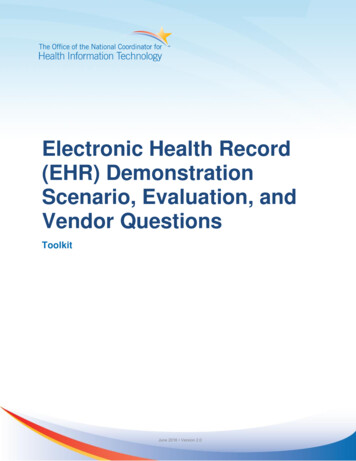
Transcription
Electronic Health Record(EHR) DemonstrationScenario, Evaluation, andVendor QuestionsToolkitJune 2016 Version 2.0
DESCRIPTION & INSTRUCTIONSThis toolkit is intended to aid providers and health IT implementers when selecting or upgrading to acertified EHR vendor to understand the vendor capabilities through established scenarios.To use this toolkit, provide the vendor with the patient information pre-populated and use the sameinformation for each vendor for comparison purposes. Use the evaluation matrix in Section 5 to evaluatethe vendors. Additionally, Section 1 provides a list of questions to ask the vendor during your vendorselection process.June 2016 Version 2.0ii
TABLE OF CONTENTS1Questions for EHR Vendors . 11.1 Questions about the company . 11.2 Questions about the product . 11.3 Pricing questions: . 21.4 Interface questions . 21.5 Implementation questions. 21.6 Ongoing support questions. 31.7 Technical/maintenance questions . 32Tips on Scheduling Vendor Demonstrations . 33Scenario to Provide the Vendor . 54Information to Be Entered During Demonstration . 65Evaluating the Scenario . 7LIST OF EXHIBITSExhibit 1 Scenario to Provide Vendor . 5Exhibit 2 Information to Be Entered During Demonstration . 6Exhibit 3 Scenario Evaluation . 7Exhibit 4 Additional Questions . 13June 2016 Version 2.0iii
1 Questions for EHR VendorsThe questions below address important baseline information that is important to ask early in the vendorselection process, and others may be more appropriate to ask when choosing between two or threevendors. Vendor Name: Click here to enter text.Date of Meeting: Click here to enter a date.Name of Sales Contact: Click here to enter text.1.1QUESTIONS ABOUT THE COMPANY1. How long has your company been in business? How many employees do you have?Click here to enter text.2. Of those employees, how many are dedicated to research of new products, sales, and ongoingsupport? What is the research and development budget?Click here to enter text.3. How long has the EHR product been offered? Was it bought from another company? Was thePractice Management System (PMS) bought from another company?Click here to enter text.4. What were your total sales last year? Last quarter? How many salespeople and trainers are assignedto this region?Click here to enter text.5. What is your total customer base? Of those, how many are new within the last year?Click here to enter text.6. Does the company hold regular user meetings?Click here to enter text.7. Is your company involved now in any litigation with a customer? Has your company been fired from ajob in the past 3 years?Click here to enter text.1.2QUESTIONS ABOUT THE PRODUCT1. Is your software sold modularly or does it need to be purchased as a complete package? Whatfunctions are available? Can you add functionality as the need grows? Practice Management Inter-office messaging E-prescribing Lab viewing/reporting/graphing Other:Click here to enter text.2. What operating platform does the product work on?Click here to enter text.3. Is the product used anywhere in a multisite implementation?Click here to enter text.June 2016 Version 2.01
4. Will your company guarantee in the contract that the software will comply with all current and futureFederal and State mandates? Health Insurance Portability and Accountability Act (HIPAA)? Does thesoftware have a Health Level 7 lab interface?Click here to enter text.1.3PRICING QUESTIONS:1. How are the licenses issued? Concurrent user versus per practitioner?Click here to enter text.2. What is the cost per practitioner (or concurrent user), for the entire package?Click here to enter text.3. What does the price include? Software Hardware Training Maintenance Upgrades/further training/maintenance Travel for your employees Other4. How much will ongoing maintenance and upgrades cost?Click here to enter text.1.4INTERFACE QUESTIONS1. Can your software interface with a PMS? Lab systems? Is there an added cost for these interfaces?Click here to enter text.2. What existing interfaces are up and running?Click here to enter text.3. Can I speak with a provider or administrator of a clinic presently using these interfaces?Click here to enter text.1.5IMPLEMENTATION QUESTIONS1. Will your company assume all aspects of implementation (i.e., hardware and software)?Click here to enter text.2. Does the training occur onsite or at your facilities? Is this training included in the overall cost?Click here to enter text.3. Are you willing to be flexible with your training methods (e.g., individual versus group training basedon our needs)?Click here to enter text.4. Is your software tailored for physician specialties (e.g., OB/GYN)? What sort of customization, if any,is needed for specialties?Click here to enter text.5. Describe the process of transition to EHR. What are some of the difficulties? What can I expect?Click here to enter text.6. (If interested in voice recognition) Describe how your voice-activated system works. How easy ordifficult is the transition? Will I need to have an “auditor” for some time after I move to voice-activatednotes?Click here to enter text.June 2016 Version 2.02
7. At what point in the process does the salesperson transition to implementation specialist?Click here to enter text.8. How often will a support person(s) be available once the system goes “live,” in case of any systemdifficulties?Click here to enter text.1.6ONGOING SUPPORT QUESTIONS1. What is the frequency and depth of upgrades?Click here to enter text.2. What is your process for enhancement requests?Click here to enter text.3. What happens if the system fails? How do I reach you, and how accessible is your decision support?Click here to enter text.1.7TECHNICAL/MAINTENANCE QUESTIONS1. What personnel and qualifications do I need to support and operate this system?Click here to enter text.2. Does your system include any database reporting tools or special links to popular reporting productsthat run under Windows? Which ones?Click here to enter text.3. Does this system work over the Internet or do I need to purchase a server?Click here to enter text.4. Does the system require regularly scheduled (e.g., daily, monthly) downtime for backups, systemmaintenance, etc.? Briefly explain.Click here to enter text.5. What safeguards (e.g., fault tolerance, hardware redundancy) are included to eliminate unplanneddowntime?Click here to enter text.6. What are your data retention capabilities, if any, and recommendations for maintaining history online?Click here to enter text.2 Tips on Scheduling Vendor DemonstrationsThe focus of the system selection phase for EHR implementation should be vendor demonstrations.Vendor demos provide the chance to see the look and functionality of an EHR application. The purpose ofthe demo is to get an overview of the application and to ask the vendor questions.Once you have an idea of your practice, select about 5–10 different vendors for the demos. In selectingvendors for the demos, focus on EHR applications that meet the needs of your practice. Talk to otherpractices in the area similar to yours to find out what EHRs they use and to check the software provider'scredentials and certificates.Once you have an idea of what your practice needs are, select about 5-10 different vendors for thedemos. In selecting vendors for the demos focus on EHR applications that meet the needs of yourpractice. Talk to other practices in the area similar to yours to find out what EHRs they use and check thesoftware provider's credentials and certificates.This document provides helpful hints on planning and attending EHR application demonstrations .June 2016 Version 2.03
1. A good number of demos to request is somewhere between 5 and 10 different vendors.With fewer than five, you probably will not see enough vendors to get a feel for the functionalitythat exists in the market. With more than 10, you will probably lose track of the subtle differencesamong vendors.We recommend attending the demos of 5 to 10 vendors, and if you still do not have a goodfeeling about any of the products, select another group of 5 to 10 and repeat the process.Attending demos can be a tedious process. Pace yourself, and try not to see all of the demos inthe same week.2. When the vendor contacts you to set up the demo, be clear about which products you wouldlike to see—EHR or EHR and PMS.3. The vendor will offer either an onsite demo or a Web-based demo.For an onsite demo, you will usually need an Internet connection and a screen or some way forthe vendor to present the demo. Be sure to ask the vendor what equipment is needed for thedemo.For a Web-based demo, you will need a telephone with speakerphone, a computer that isconnected to the Internet, and a screen or some way for everyone to view the demo.4. Practices vary on which staff members are invited to the vendor demos. At a minimum, thephysician champion and practice manager should attend. Ideally, the entire implementationteam would be invited to attend the demo. It is important to engage practicing physicians, nurses,and care team members in the demo and implementation process.5. The demo should last approximately 1–1.5 hours for the EHR portion. Allow more time for a demoof the EHR and the PMS together. Come prepared with a list of questions for the vendor (seeSection 1 for model questions). Ask each vendor the same questions to get a feel for how different EHRs compare. Come prepared with some clinical scenarios or specific workflows for the vendor to “walkthrough.” The scenarios will give you a chance to see the EHR in action. Ask the vendor to show how certain reporting tasks would be possible. For example, howdoes the application report on patients with a particular disease, medication, or lab result? Ask questions with multiple search parameters; for example, how does the application reporton patients with diabetes who, within the past year, have had a HgbA1c 9.0 percent?6. During the demo, try not to interrupt the vendor with questions too often. It is sometimeshard not to ask everything that comes to mind, but the vendor will need to pace the demo withinthe allocated time so you can view all the information. Write down your questions throughout thedemo and make sure you ask all your questions, but you may want to see a particular function allthe way through and then ask questions at the end.7. After seeing all the vendor demos and narrowing your choices down to the serious contenders,request references from each of the vendors. These references will be other customers whouse the EHR product and can communicate their experiences. Your implementation team canschedule phone call interviews with these references to get an idea of their experiences.8. After the product demos and reference phone calls, you will be able to further narrow your list ofEHR vendors. Experts say to enter contract negotiations with at least two vendors to providethe necessary leverage to get the best deal. For these remaining few vendors, request referencesfrom these vendors for practices that you can visit onsite. These may or may not be the samereferences called previously for telephone interviews.June 2016 Version 2.04
3 Scenario to Provide the VendorThe information in Exhibit 1 is a sample scenario that can be provided to the vendor to pre-populate priorto the demonstration.The purpose of this demonstration is to get a good idea of the workflow capabilities and efficiency of theprogram to meet your practice needs. It is important to ask the vendor to highlight how their product willassist with ease of documentation, generating actionable reports, and the tracking quality measurement.This will also be helpful for quality improvement programs such as Meaningful Use and the PhysicianQuality Reporting System. Additional key capabilities to discuss and demo include patient engagementfunctionality, population health management tools, care management, and care coordination functionality,as well as tools to fit your practice, specialty, and patient population specific needs. Key additionalquestions to ask are in Exhibit 4.Item Problems Medications Allergies PMH/PSH/FH/Soc.Hx. Other PatientExhibit 1 Scenario to Provide Vendor1ScenarioDaisy Duck, DOB 1/4/40Married, mother of 3, retiredHIPAA form signed 5/1/06HypertensionDiabetes Type IIEsophageal RefluxHTCZ 12.5 mg qidLopressor 100 mg bidPrevacid 30mg hsMetformin 500mg bidPenicillin urticariaDiabetesHypertensionGERDThree normal, spontaneous vaginal deliveriesHospitalized once for Pneumonia in 1998NonsmokerLast Tetanus 1998Influenza vaccine 10/04Pneumovax 1999Mammography 19991Information included in this scenario may appear to contain personally identifiable data; however, these data arerepresentational only. No personally identifiable information (PII) or protected health information (PHI) is containedherein.June 2016 Version 2.05
4 Information to Be Entered DuringDemonstrationDo not provide this information to the vendor prior to the demonstration. Have them enter it during thedemonstration to see how the system handles it.ItemComplaintPELabAssessmentPlanExhibit 2 Information to Be Entered During Demonstration2Scenario Follow-up care to patient for diabetes, hypertension, and reflux. Patient states FBSelevated at home. Weight: 180; Height: 5'9" BP: 180/95, repeat 130/78 P: 89 R: 28 regular unlabored T: 97.6 F General: no distress noted HEENT: nasal congestion Lungs: clear to auscultation Abd: soft on palpation, nontender Neuro: alert, orientated x3 Foot exam: (visual) normal Accuchek in office 220 Urine for microalbumin: negative Previous lab ( 6 mos ago) HgbA1c: 8 Lipid Profile (fasting) HgbA1c Referral to Dr. Mickey Mouse for dilated eye exam Referral to Dr. Olive Oil for Pap smear Hypertension, controlled Diabetes Type II GERD Pt to call back in 1 month if no improvement in FBS Diabetic teaching reinforced in regards to diet and home monitoring of blood sugars Patient Instructions provided Health Summary provided F/U in 3 months Rx HCTZ 12.5 mg qd x 6 months Lopressor 100mg bid x 6 months Prevacid 30mg q HS x 6 months Discontinue: Metformin 500mg bid x 3 months Add: Actos 10mg daily2Information included in this scenario may appear to contain personally identifiable data; however, these data arerepresentational only. No PII or PHI is contained herein.June 2016 Version 2.06
5 Evaluating the ScenarioUse the evaluation matrix to evaluate how each vendor does with the scenario.Vendors should be able to walk through these scenarios once they have entered the background data provided. Allot time for the vendorto demonstrate other features of interest after the scenario is completed.Instructions: Note difficulties in performing the documentation tasks, and score the ease of each task from 1 (very difficult or timeconsuming) to 5 (easy and quick). Make sure to pay attention to the number of mouse clicks and screen changes it takes to complete onetask and check for visibility of key information and the intuitiveness of the user interface.Exhibit 3 Scenario Evaluation3DutyTaskNotesReceptionistPatient calls in to schedule a follow-up appointment fordiabetes, HTN, GERD. ReceptionistPatient comes in for appointment. Scheduling of patient.Documentation of visit reason.Health maintenance prompts.Ability to auto-confirm appointments.Prompts to remind patient to fast due to fasting bloodsugar.Insurance information entered/Insurance cardscanned.Signed HIPAA release.Eligibility checked electronically.Health history gathered?Patient checked in/Alert to MA that patient is inwaiting room.Patient identified.Patient visit status updated.Patient’s chart pulled up.MAMA sees alert and rooms the patient. MAMA reviews visit reason and patient’s chart. Patient’s chart. Easily identify visit reason. Preventive care prompts and action.Score(1–5)Clickhere toentertext.Clickhere toentertext.Clickhere toentertext.Clickhere toentertext.3Information included in this scenario may appear to contain personally identifiable data; however, these data are representational only. No PII or PHI iscontained herein.June 2016 Version 2.07
DutyTaskNotesMAMA documents chief complaints: Diabetes, HTN, GERD. MAMA Documents: Weight: 180 Height: 5'9" BP: 180/95 Pulse: 89 Temp: 97.6FMA Score(1–5)ClickMultiple chief complaints.here toEntered in a note template or in MA view.entertext.BP: lying, sitting, standing (Prompts for out of range). Clickhere toPulse: oral, radial, pedal, femoral.enterTemperature: Fahrenheit, Celsius.text.Height: feet/inches, centimeters.Calculates and displays BMI.Allergy documentation: food, drug, environment.How are medications updated?MA Reviews: Allergies: Penicillin urticarial. Medication List: HCTZ 12.5mg.qid, Lopressor 100mgbid, Prevacid 30mg. hs: Metformin 500mg bid.MA Reviews: Content specific to each Hx item. PMH: Diabetes, Type II, Hypertension, GERD. Ease of documenting year and relationship to patient. Surg/Hosp Hx: hospitalized pneumonia 1998. PQRI prompt for smoking status. Family Hx: mother L & W, father dec. CHF. 3 children normal vag. deliveries. Social Hx: nonsmoker, retired. Immunizations: Tetanus 98, flu 10/04, Pneumovax 99. Advanced Directive: signed 1/3/02. Preventative Care: mammogram 99.PhysicianMA completes entry.Physician is prompted that patient is ready.PhysicianPhysician looks at CC, PMH, and past visit.June 2016 Version 2.0 Physician prompt easily identified. Identify correct patients chart. Patient’s chart/medical Hx easily accessible. Chief complaint entered by MA visible/can it beedited. Option to default PMH into note. Ease of viewing past visit. Alerts reminders when a note is opened.Clickhere toentertext.Clickhere toentertext.Clickhere toentertext.8
DutyTaskPhysicianPhysician opensnew note anddocuments up diabetes, hypertension, Click here to enter text.GERD. Patient statesexperiencing elevated fastingblood sugar at home.Diabetes Type II, Hypertension,Click here to enter text.GERDMeds: HTCZ 12.5mg qid,Lopressor 100mg bid, Prevacid30mg hs, Metformin 500mg bid.Click here to
certified EHR vendor to understand the vendor capabilities through established scenarios. To use this toolkit, provide the vendor with the patient information pre-populated and use the same information for each vendor for comparison purposes. Use th
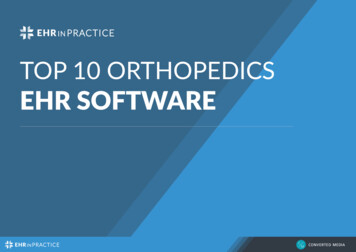
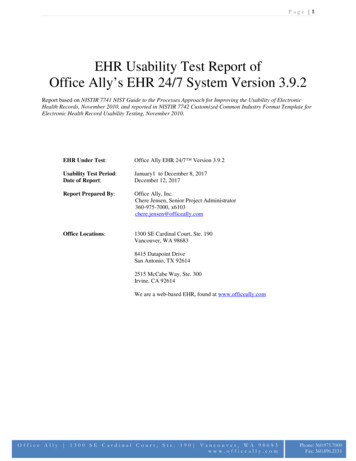
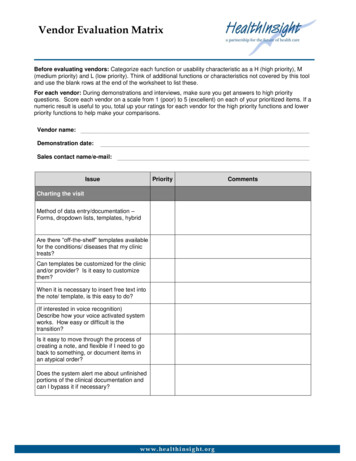
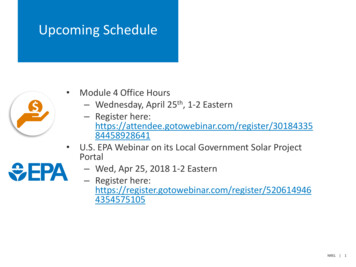
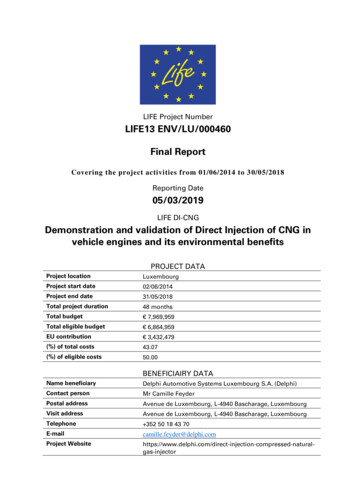
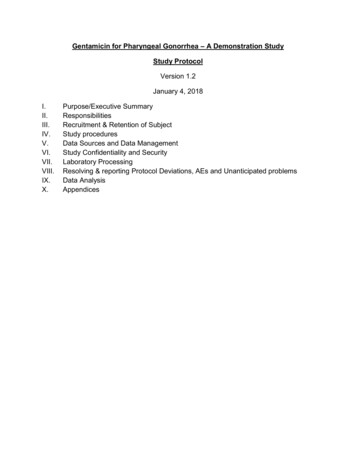
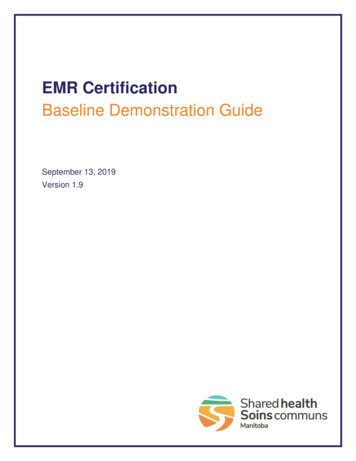

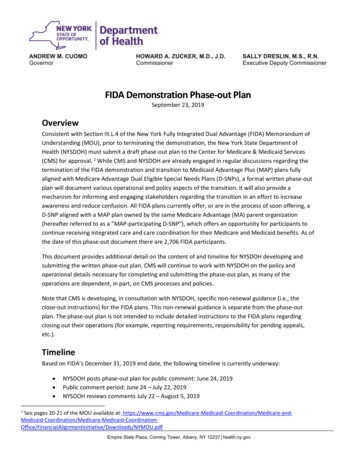
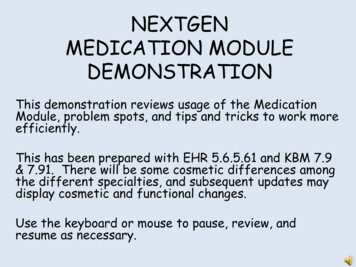

![Informatica Interview Questions and Answers [Scenario-Based]](/img/2/informatica-interview-questions-and-answers-scenario-based-1.jpg)